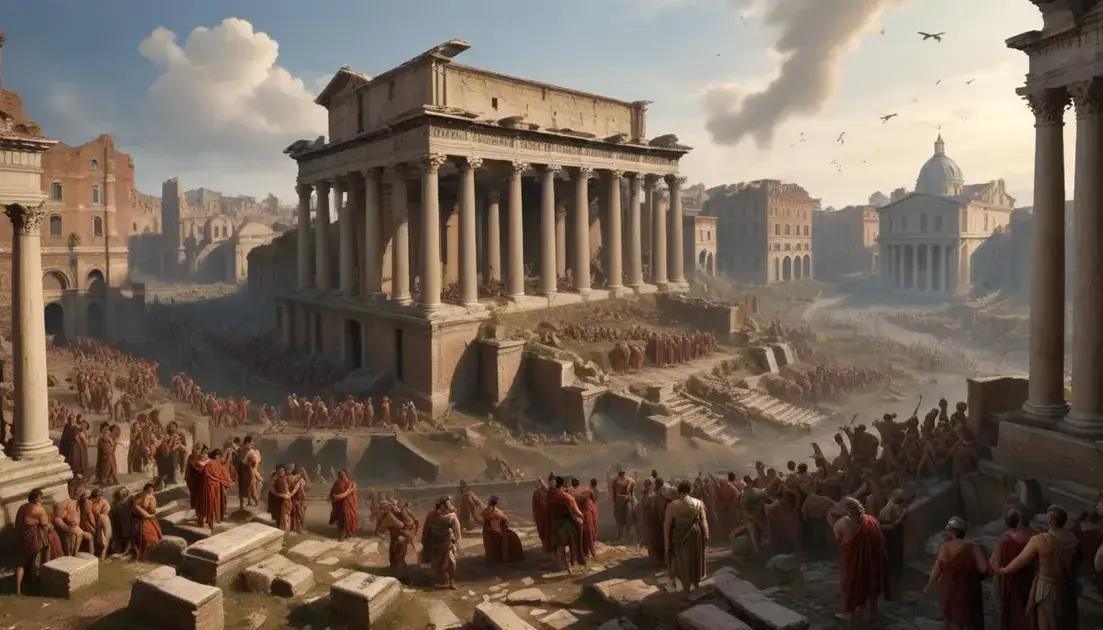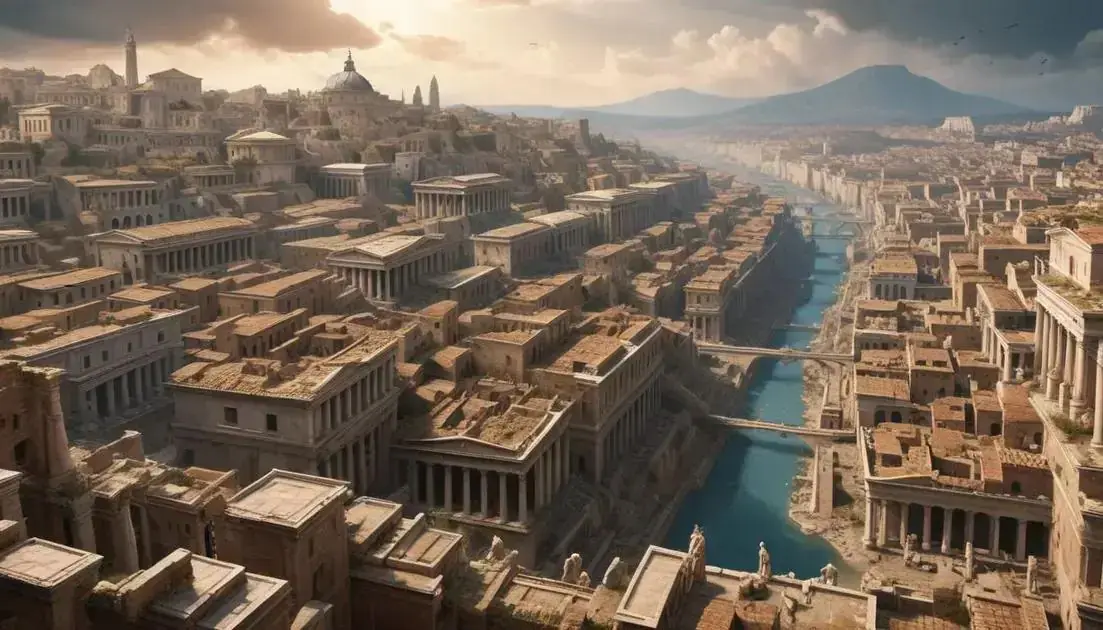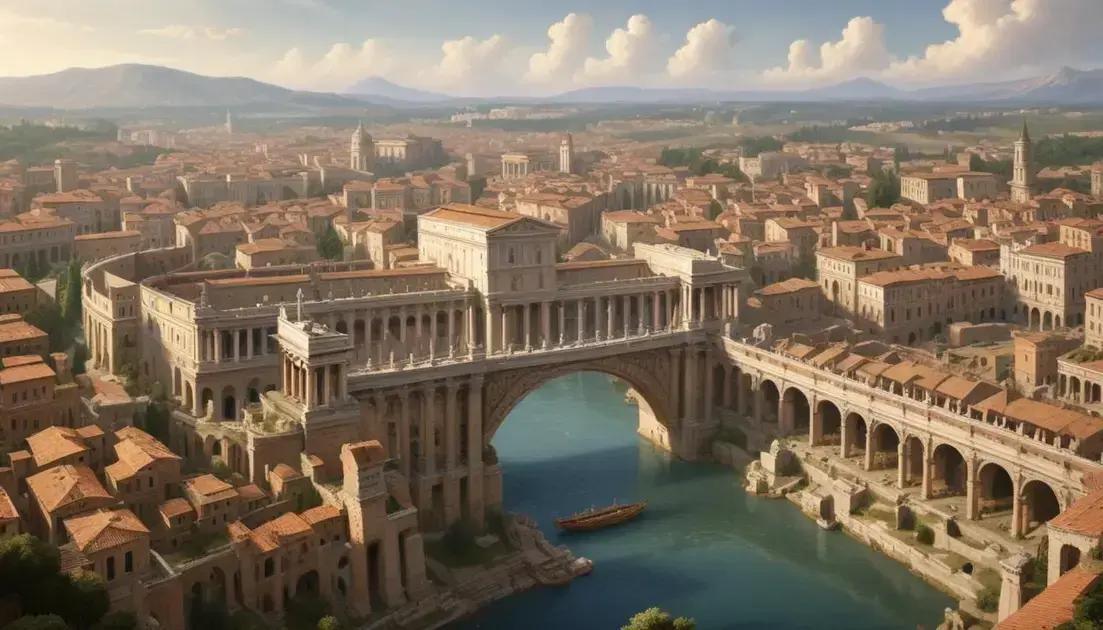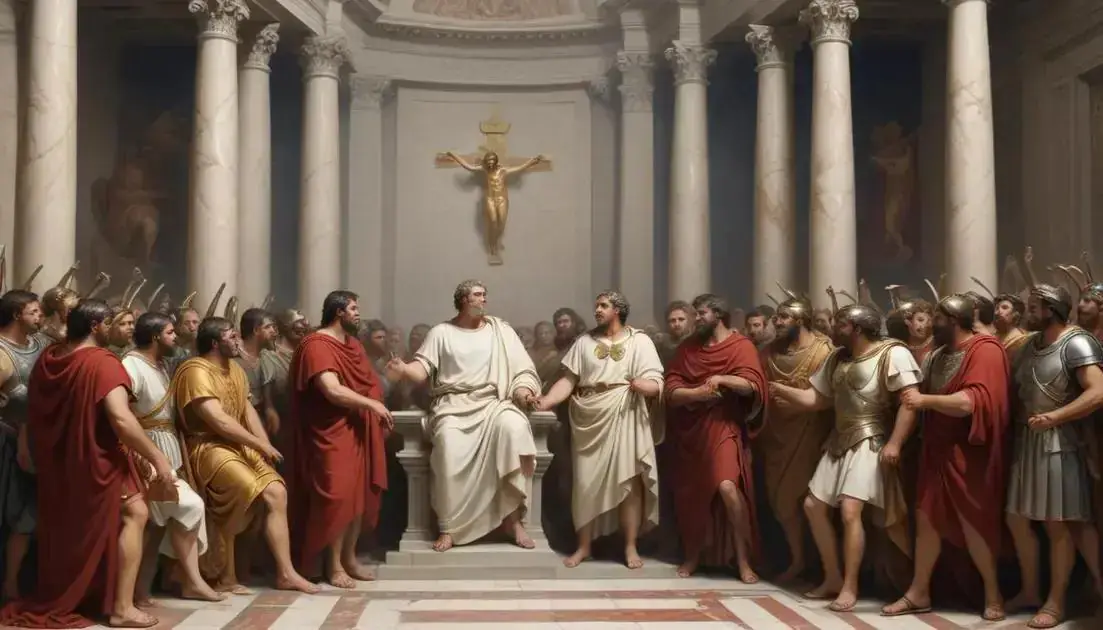
The Fall of Western Rome: End of Antiquity and Beginning of the Middle Ages
The fall of Western Rome in 476 AD marked a significant turning point in history, leading to widespread chaos and cultural shifts across Europe. Key figures like Rômulo Augústulo and Odoacer played crucial roles in this transformation, which saw the rise of local leaders and new cultural identities. The collapse prompted immediate consequences, including economic decline and the loss of central authority. Over time, these changes led to the emergence of Christianity as a unifying force and the blending of Roman traditions with new customs, ultimately shaping the Middle Ages and leaving a lasting legacy.
The Fall of Western Rome in 476 AD reshaped Europe forever. Curious about how this event set the stage for the Middle Ages? Let’s dive into the history!
Understanding the Causes of the Fall
The Fall of Western Rome didn’t happen overnight. Several key reasons contributed to its decline. Let’s break it down.
Economic Troubles
One major issue was the economy. Rome faced serious economic problems, like high taxes and inflation. That made everyday life harder for many people. As the money lost its value, citizens struggled to buy basic goods.
Military Struggles
Another factor was the military. The Roman army became weaker over the years. They had trouble finding soldiers. Many were foreigners, who didn’t always care for the empire. This made it tough to defend the borders against invaders.
Political Corruption
Corruption also played a role. Leaders were often more focused on personal gain than the good of the empire. This led to poor decisions that weakened Rome.
Barbarian Invasions
Finally, there were the invasions. Various groups like the Visigoths and Vandals attacked Roman territories. The empire couldn’t handle these constant threats and eventually fell apart.
The Role of Key Figures
Key figures played a huge part in the Fall of Western Rome. These leaders had major impacts on the events during this time.
Rômulo Augústulo
One of the last emperors was Rômulo Augústulo. He was a young boy when he ruled. His defeat by the Germanic king Odoacer in 476 AD marked the end of the empire. This event is often seen as the final blow to Rome’s power.
Odoacer
Odoacer was a military leader who became king after Rômulo’s fall. He wasn’t Roman, but he made decisions that changed the course of history. By declaring himself king, he symbolized the shift from Roman rule to barbarian control.
Attila the Hun
Another important figure was Attila the Hun. His invasions terrified many cities. While he didn’t directly cause the fall, his attacks contributed to the weakening of Roman defenses. He showed how vulnerable Rome had become.
Where Are They Now?
These figures had different motivations. Rômulo was a pawn in a larger game, while Odoacer and Attila sought power. Their stories illustrate how personal ambitions intertwined with the fate of an empire.
Immediate Consequences of the Collapse
The immediate consequences of the collapse of Western Rome were felt across the entire region. The fall created chaos and uncertainty.
Loss of Central Authority
With the fall of the empire, people lost their central authority. There was no longer a strong government to provide order. This led to confusion and instability in many cities.
Rise of Local Leaders
Local leaders began to take control. They offered protection and stability, but varied widely in strength. Some were fair while others ruled with fear.
Economic Decline
The economy took a big hit. Trade routes were disrupted. Without a strong government, people struggled to maintain businesses and farms. This caused food shortages.
Cultural Shifts
As the Roman culture faded, new ideas emerged. People started blending old Roman practices with new customs. This created a mix of cultures and laid the groundwork for the Middle Ages.
Cultural Shifts and Legacy
The cultural shifts after the fall of Western Rome were significant. These changes shaped the future of Europe.
Blending of Cultures
As old Roman traditions faded, new cultures emerged. Local customs mixed with remnants of Roman life, creating unique communities. People adapted their practices to fit new realities.
Christianity’s Rise
Christianity also gained strength during this time. The Church became a central part of daily life. It offered hope, unity, and stability as the empire fell apart.
Education and Knowledge
With the collapse, formal education declined. Many schools closed, and learning became less common. However, monasteries preserved important texts. They kept knowledge alive during difficult times.
Influence on Future Societies
The shifts after Rome’s fall set the stage for the Middle Ages. These changes influenced art, politics, and culture for centuries. Today, we can still see the impact of this transition.
Conclusion
In conclusion, the fall of Western Rome led to major changes in society, culture, and politics. This event reshaped Europe in ways that we still see today. Although the empire fell, it paved the way for new ideas and practices that helped cultures blend and grow.
Understanding these historical shifts allows us to appreciate how they’ve influenced modern life. From the rise of Christianity to the preservation of knowledge in monasteries, these changes played key roles in shaping future societies. All in all, the legacy of Rome’s fall reminds us that even in decline, new beginnings can emerge, shaping the world around us.


